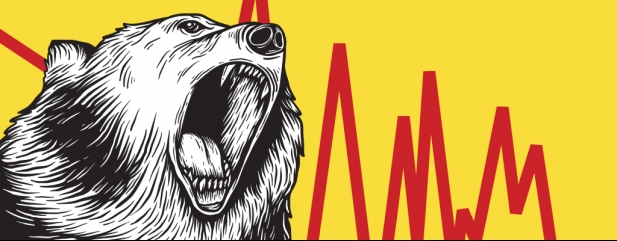Archived article
Please note that tax, investment, pension and ISA rules can change and the information and any views contained in this article may now be inaccurate.
S&P 500 tips a toe into bear territory, but what should investors expect next?

Unlike in sports nobody blows a whistle when stocks move from a bull market into a bear market. But one conventional definition says it is when a market drops 20% from the previous peak.
On 20 May the S&P 500 index briefly registered a 20% drop from its peak in January 2022.
The technology focused Nasdaq 100 has been in bear market territory for weeks and is down around 27% from its peak in November 2021.
WHAT TYPE OF BEAR MARKET TO EXPECT
The last official bear market in March 2020 was very brief because of the US Federal Reserve’s monetary stimulus actions which pulled markets out of the danger zone.
With the Fed busy fighting inflation and raising interest rates what should investors expect this time around?
The latest MLIV Pulse survey asked over 1,000 investors where they thought the S&P 500 would bottom and the median expectation was 3,600, implying a further 10% drop.
Chief investment strategist Michael Hartnett at Bank of America has identified 19 bear markets over the last 190 years.
The average price decline has been 37.3% from peak to trough and the decline lasted on average around 10 months.
The past is not a guide to the future, but if the current bear phase mirrors the historical average Hartnett calculates the S&P 500 will bottom on 19 October 2022 at 3,000 points. Such a level implies a further 23% drop.
The equivalent level for the Nasdaq 100 is 10,000, implying a further 16% drop. The good news for technology investors is that 58% of the Nasdaq 100 stocks are already down more than 37.3%.
The problem with this type of analysis is that the average hides a lot of historical variation.
One of the deepest bear markets happened during the great depression in the 1930s. The Dow Jones Industrials lost 89% over three years.
The turn-of-the century bursting of the dot-com bubble saw the S&P fall 36.8% over 18 months.
It is clear those historical events had their own causes and circumstances which are different to today’s.
TWO TYPES OF BEAR
Chris Watling of Longview Economics has identified two types of bear market. The first category is shock-related and usually lasts around three-to-six months. The emerging market debt crisis in 1997-98 falls into this category.
The second type is more worrying and typically lasts several quarters. They tend to be driven by a global recession, monetary tightening or the unwinding of a bubble.
Equity strategists David Kostin at Goldman Sachs and JP Morgan’s Marko Kolanovic believe recession fears are overplayed. Both see the potential for stocks to rebound later in the year.
Important information:
These articles are provided by Shares magazine which is published by AJ Bell Media, a part of AJ Bell. Shares is not written by AJ Bell.
Shares is provided for your general information and use and is not a personal recommendation to invest. It is not intended to be relied upon by you in making or not making any investment decisions. The investments referred to in these articles will not be suitable for all investors. If in doubt please seek appropriate independent financial advice.
Investors acting on the information in these articles do so at their own risk and AJ Bell Media and its staff do not accept liability for losses suffered by investors as a result of their investment decisions.
Issue contents
Feature
- What to do when one of your investments goes wrong
- Cut-price quality: Get into these FTSE 350 stars at a cheaper level
- Why Indivior shares have risen six-fold in two years
- How Buffettology and Free Spirit funds can bounce back from underperformance
- Emerging markets: Views from the experts
- How does China’s growth target for 2022 compare with the rest of the world?
Great Ideas
- Rampant CentralNic growth not being fairly reflected in the share price
- Homeserve takeover looks a done deal but there is a chance of a counterbid
- Future is an undervalued growth company with a unique business model
- Euromoney enjoys strong recovery with results set to beat expectations
- Strong demand and limited supply are driving solid growth at Tritax Eurobox
- Why investors should stick with SSE despite windfall tax concerns
News
- Oh Snap! Share price plunge reflects an advertising slowdown
- Why Deere shares fell 14% despite lifting profit guidance
- S&P 500 tips a toe into bear territory, but what should investors expect next?
- A new government survey suggests hybrid working is firmly here to stay
- Why US retail titans dragged down Wall Street

 magazine
magazine









